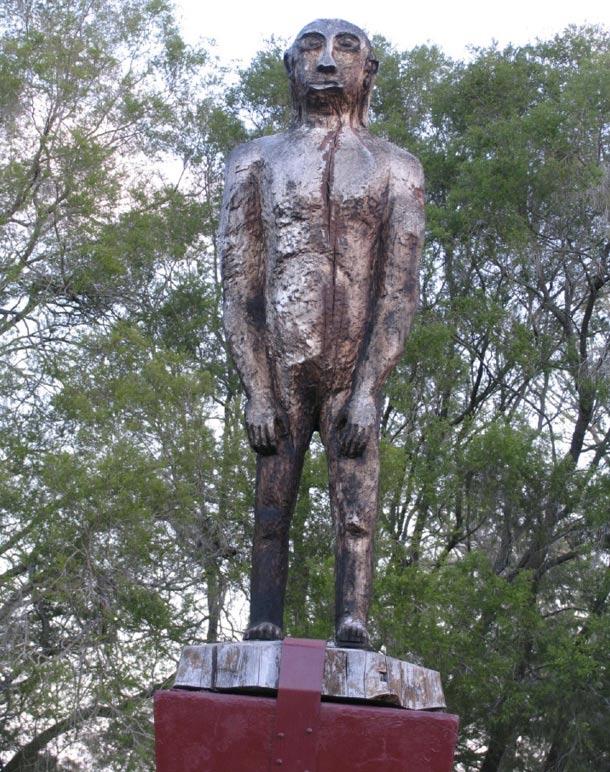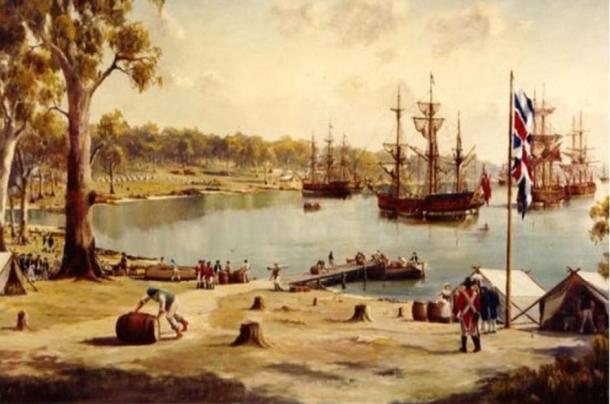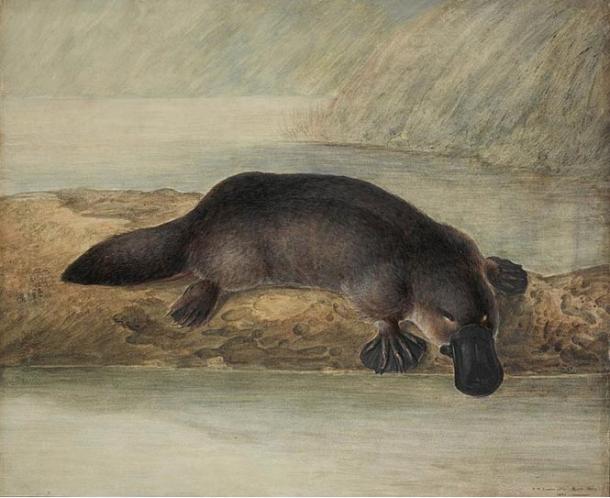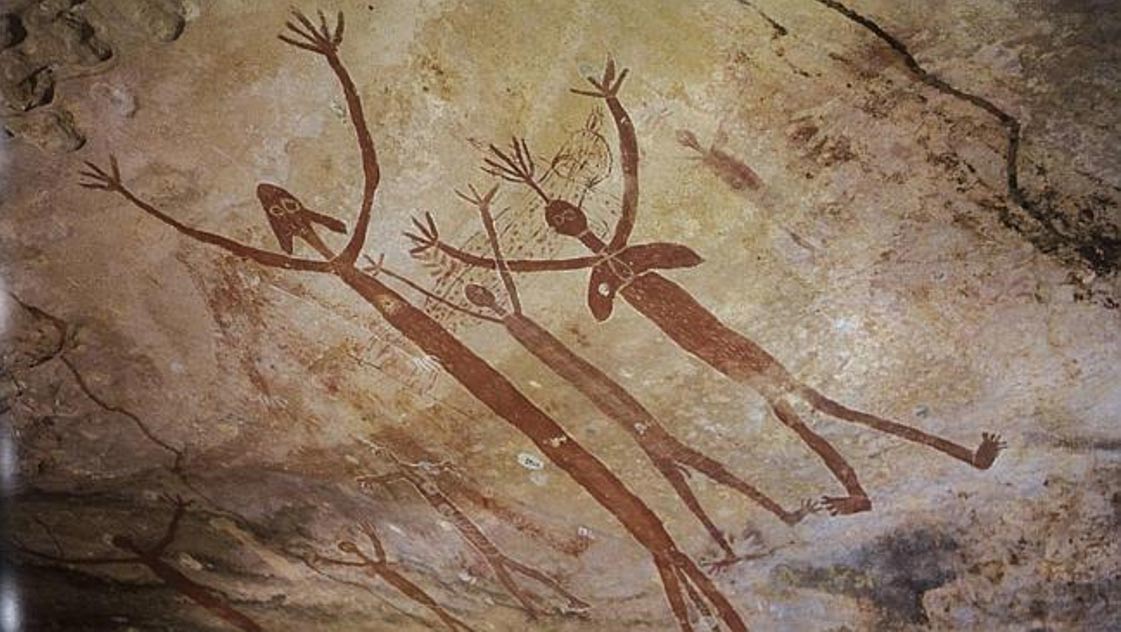The Australian Yowie: Mysterious Legends of a Tribe of Hairy People
In 1804, the book Modern Geography – a Description of the Empires, Kingdoms, States and Colonies: with the Oceans, Seas and Isles: In all Parts of the World was published by John Pinkerton. In it there is a comment regarding a population of Aborigines that shared Sydney Harbor with another tribe. They were described as flat-nosed with wide nostrils; thick eyebrows and sunken eyes. Their mouths were of ‘prodigious width’ with thick lips and prominent jaws. The Aborigines regarded them as another people entirely: the Yahoos or Yowies meaning “hairy people”.
The Two Yowie Groups of Australia
The Kuku Yalanji Tribe of Tropical North Queensland, Australia believes in the existence of this creature. They claim to have coexisted with the Yowie for centuries and have a long and detailed history of attacks from them in their legends. The Yowie is their equivalent to what Native American tribes in Northwest America call Sasquatch.
Historical accounts refer to two types of Yowie in Australia with the most prominent species being Gigantopithecus. This is the larger species said to grow between 6 and 10 feet tall, weighing up to 1,000 lbs. It is described as a cryptic and said to resemble a huge hair covered ape-like man with talons for fingers. Compared to the North American Sasquatch, it is believed to have more of a primate look to the face and head and walk upright. Its temperament has also been described as more aggressive and dangerous towards humans. The other species of Yowie is described as being smaller, between 4-5 feet tall. While most people are skeptical of the accounts, some believe it is an ancient species of hominid that has avoided extinction. These hominids have been depicted in local cave art as tall, hairy figures beside smaller Aboriginal figures.

Statue of a Yowie, Kilcoy, Queensland, Australia (Wikimedia Commons)
Contact with the Yowie: Sightings Across the Years
European contact with the Yowie is said to have begun with the arrival of the First Fleet in Sydney Cove in 1788. During the early colonial era, Aborigines often warned British settlers to beware of an ape-like creatures lurking in the rugged mountains and deep forests of the continent. One particular account, which reached London in a letter in 1820, told of an encounter in 1789 by convicts and a party of marines while on a hunting trip. The men killed a bunch of wallabies and were returning to the settlement when, atop a nearby hill, they saw an animal observing them among the trees which they later claimed was twice the height of an ordinary man.

Sydney Cove, First Fleet, 1788, Australia (NewStars)
- Wildman, Chinese Version of Bigfoot: Sightings, Scientific Tests, Theories
- Another Human Hybrid? The Controversy Continues One Year Later
The first southern sighting in Australia was reported on Philip Island, Victoria in 1849. During this encounter, several people observed a creature, said to be between 6-7 ft tall, resembling a cross between a baboon and a man. At the time, the creature was said to be sitting on the edge of a lake when it was shot at.
Arguably one of the stranger and more controversial sightings, comes in the form of a photograph from 1936. It is one of a series of images taken by Rich Jones while working at an isolated loggers camp in Batlow, located in the Snowy Mountains of New South Wales, 450km (279.6 miles) south-west of Sydney. The image appears to show a large creature sitting with his hands in his lap, behind two men on a wooden log. Further analysis of the photo purportedly shows the head area resting near its chest looking down. This is due to “tree line matrixing”.

The mysterious photograph taken by Rich Jones in Batlow, New South Wales that some say was a Yowie (1932) (Youtube)
Another well known incident occurred in December 1979 when a local couple, Leo and Patricia George, ventured into the forest and came across the carcass of a mutilated kangaroo. They later claimed that the perpetrator was only forty feet away and described a creature ten feet tall, covered with hair, that stopped to stare back at them before disappearing back into the brush.
Controversial Australian Specimens Found to Be Fact
The Yowie isn’t the only creature in Australian history to have been met with skepticism over its existence. When European settlers sent a specimen of the Platypus back to London, scientists were baffled at the egg-laying, duck-billed, beaver-tailed, otter-footed mammal and concluded it was some kind of fake. Only when more specimens arrived did the scientific community accept that it was real.
- Lovelock Cave: A Tale of Giants or A Giant Tale of Fiction?
- Monster Files: A Look At Bizarre Creatures and Extraordinary Animals
- DNA study solves mystery of Himalayan Yeti, with surprising results

Painting of a platypus, John Lewin, New South Wales, Australia (1808) (Wikipedia Commons)
Modern Yowie Sightings
Today, sightings of the Yowie are said to take place in the south and central Coastal regions of New South Wales and Queensland's Gold Coast (The Blue Mountain area just outside Sydney is a hot spot).
One expert on the topic, Rex Gilroy, claims to have investigated over 3,000 cases and believes the Yowie is related to the North American Bigfoot. By comparison, in North America there have been thousands of Bigfoot sighting in modern history (3,313 in 92 years according to one website). Gilroy’s research for various newspaper and magazines in the 1970s introduced the topic to the public. Despite the numerous sightings and eye-witness accounts, some researchers have come to the conclusion that evidence for the Yowie is so rare that the mythical being is probably some kind of hoax.
In 2006, a book was published with everything there is to know on the subject entitled, The Yowie: In Search of Australia's Bigfoot by authors Tony Healy and Paul Cropper. Healy and Cropper admit there is little evidence to support the existence of such a creature. No bones have been found, tracks are rare, very little film or photos exist, just like the Sasquatch phenomenon in North America.

Map of Reported Bigfoot Sightings in North America (2008) (Wikimedia Commons)
Yowie sightings continue. Here are three recent examples: A seven foot Yowie was allegedly spotted in 2016 by a bushwalker in the Darling Downs' mountain ranges near Toowoomba. That Yowie seemed disinterested in the woman, and is said to have “sat down in the long grass and ignored her.” Then the Ipswich Yowie may have made an appearance in a 2017 You Tube video filmed by a man who had only intended to capture footage of a large flock of cockatoos. Finally, just a couple of weeks ago, a Yowie sighting was made 15-20km north of Roma, in which an approximately 152 cm (five foot) tall “auburn haired creature” was seen standing beside a dead kangaroo on the Carnarvon Highway.
Some of the Many Versions of Bigfoot/Yowies
Tales of large, hairy hominids are universal, timeless and found in the myths and folklores of cultures across the world. Called the “Yeti" in the Himalayas, the "Chi- Chi” in China, the “Almas” in Mongolia, “Kapre” in the Philippines, “Forestmen" in Vietnam, the list of countries with stories of hairy man-apes inhabiting remote parts of the globe is endless. Australia is just one of the lesser known areas where reported encounters with the legendary Bigfoot-like creatures have taken place.
Featured Image: Ancient Aboriginal drawings of mythical quinkins/yowies. Laura, Australia. (Public Domain)
By Bryan Hill
References
Haran, Brady. "'First Platypus' Still Intact." BBC News. May 16, 2005. http://news.bbc.co.uk/2/hi/science/nature/4547151.stm
Campbell, Ian. "Batemans Bay Yowie Sighting an Australian First." ABC South East NSW. December 9, 2014. http://www.abc.net.au/local/stories/2014/12/09/4145054.htm
"The Yowie In Search of Australia's Bigfoot." The Yowie In Search of Australia's Bigfoot. http://www.yowiefile.com/The_Yowie_File/Home.html
Gilroy, Rex. "A Short History of Early “Hairy Man” Reports." Australian Yowie Research Centre. http://www.australianyowieresearchcentre.com/yowie-short-history-early-reports.html
"Yowie - Yowie, Australia's Sasquatch." Occultopedia, the Occult and Unexplained Encyclopedia. http://www.occultopedia.com/y/yowie.htm
"Yowie." Yowie. http://self.gutenberg.org/articles/yowie
Hyperlink - http://doubtfulnewscom.c.presscdn.com/wp-content/uploads/2013/09/SasquatchSightings_Small.png
"Australia's Bigfoot the Yowie in 1936 Photograph." YouTube. February 3, 2014. https://www.youtube.com/watch?v=R3pvaAhMWzM




















Comments
They're real, and they're people, not animals.
tamifabulous
Here's a thought to those who are completely convinced that the Yowie does not exist, go spend a few nights in the mountains behind Kilcoy.in QLD Australia, convictions can change fast out there. Perhaps for good reason it is called Yowie Country.
Reminds me of the American Bigfoot. They have never found bones yet reports continue to emerge about encounters. The mere fact that no bones have been found is not proof that these creatures don’t exist.
Gigantopithecus is a species of immense great ape from Far East Asia. It's dimensions are almost completely postulated because all we have are some teeth and skull fragments. It MIGHT have been upright, but could just as easily been like a giant gorilla or orangutan.
So: at some point before 100k years ago, a 10ft, 800lb + ape made it across to North America as well as simultaneously heading south in numbers that supported breeding. This makes it the only primate apart from us to reach Australasia. And like us, it would probably need to become omnivorous, and completely alter the generally held patterns for great ape behaviour. So it was closer to humans and/chimps (despite remaining largely solitary like an orangutan to evade detection for this long).
I think that (saving the yeti, perhaps) IF ANY of these creatures do exist, they are not going to be Gigantopithecus.
The 1820 letter which supposedly told of an encounter between a party of marines and an animal “twice the height of an ordinary man” in 1789 is also fictional. When convenient facts don’t exist it is not uncommon for people to simply make them up just as Rex Gilroy has done with this and the previous example…
Pages